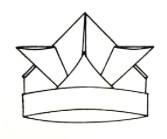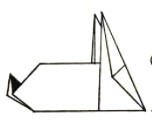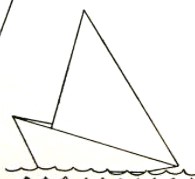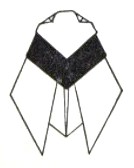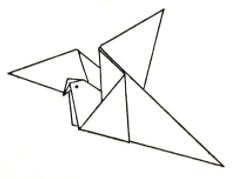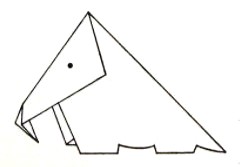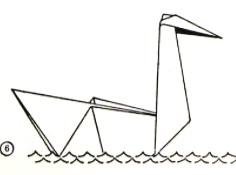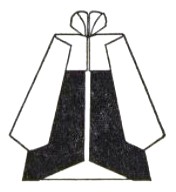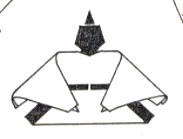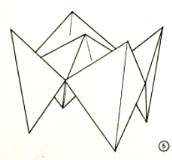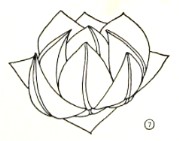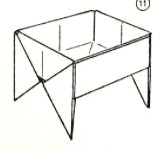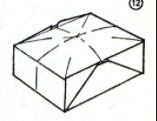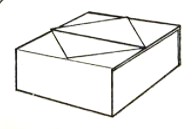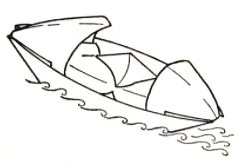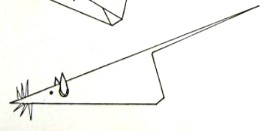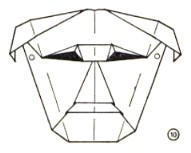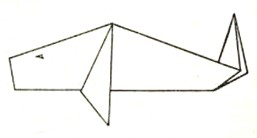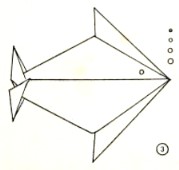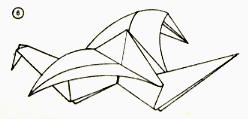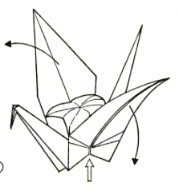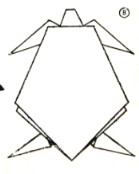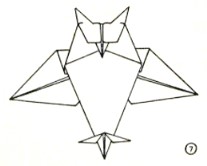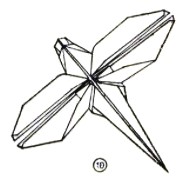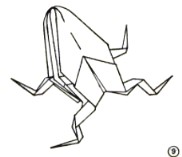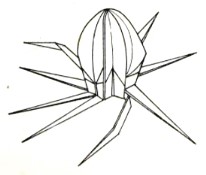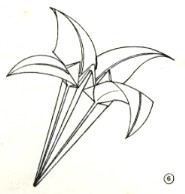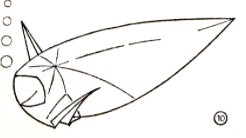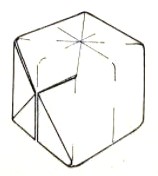| The Public Paperfolding History Project
Last updated 8/8/2024 x |
|||||||
| Your Book of Paperfolding by Vanessa and Eric de Maré, 1968 | |||||||
| 'Your
Book of Paperfolding' by Vanessa and Eric de Maré was
published by Faber and Faber in London in 1968 as part of
their 'Your Books' series. It is really a compendium of
designs taken from other published works, largely without
acknowledgement, and contains no original material.
However the clarity of the diagrams is to be admired. Eric de Maré was a famous architectural photographer, and his name may have been included on the book for just that reason. His wife Vanessa drew the diagrams for the book, which is the bulk of the work. The majority of the designs are said to be traditional Japanese or Chinese models. Not all of these atrributions are accurate. Two designs are attributed to Samuel Randlett and another, probably inaccurately, to Florence Temko. The Catherine of Cleves Box is attributed to John Smith but this is clearly an error. The introduction speaks of 'the Gift Box, which we learned from a friend'. A full version of this work can be viewed here. ********** The Introduction says that in Japan 'The simple folded object is considered to be superior to that which is cut or glued.' However, the authors do not appear to have taken this philosophy on board.
********** Chinese Knight's Helmet - The Kabuto
********** Rabbit - The Japanese Rabbit Said to be Japanese Traditional
********** Sailing Boat - The Yacht Said to be Japanese Traditional
********** Cicada Said to be Japanese Traditional
********** Pigeon Said to be Japanese Traditional
********** Elephant (Cut) Said to be Japanese Traditional
********** Swan - The Simple Swan Attributed to Florence Temko, USA. This attribution seems to be a misunderstanding of information in Harbin's 'Secrets of Origami' which attributed a way of folding this design (rather than the design itself) to Florence Temko. Note also that Vanessa Mare's diagrams do not explain the folding method attributed to Florence Temko in Harbin's book.
********** Japanese Woman (Cut) (Note that in Harbin's 'Secrets of Origami' this design is attributed to Okimasa (Kosho) Uchiyama.)
********** Japanese Man (Cut) (Note that in Harbin's 'Secrets of Origami' this design is attributed to Okimasa (Kosho) Uchiyama.)
********** Salt Cellar Said to be Japanese Traditional
********** Lotus Flower - The Lotus Said to be Japanese Traditional
********** Four-legged Container - The Sanbo-on-Legs Said to be Japanese Traditional
********** Carpenter's Hat Said to be Japanese Traditional. Developed from the Sanbo-on-Legs.
********** Gift Box (Cut) - The Catherine of Cleves Box Attributed to John Smith, England
********** Fishing Boat Said to be Japanese Traditional
********** Mouse (Cut) Attributed to Samuel Randlett, USA
********** Mask Said to be after Akira Yoshizawa, Japan
********** Whale Said to be Japanese Traditional
********** Angel Fish Attributed to Samuel Randlett, USA
********** Flapping Bird - The Flapping Bird Said to be Japanese Traditional.
********** Crane - The Paper Crane Said to be Japanese Traditional. Inflated in the Japanese manner.
********** Turtle (Cut) Said to be Japanese Traditional
********** Owl (Cut) Said to be Japanese Traditional
********** Dragonfly (Cut) - Another Cut Dragonfly Said to be Japanese Traditional
********** Jumping Frog - The Blow-up Frog Said to be Japanese Traditional
********** Octopus (Cut) Said to be Japanese Traditional
********** Lily - The Lily Said to be Japanese Traditional
********** Carp Said to be Japanese Traditional
********** Waterbomb - The Waterbomb Said to be Chinese and Japanese Traditional
********** Pagoda - The Pagoda Said to be Chinese Traditional
********** |
|||||||

